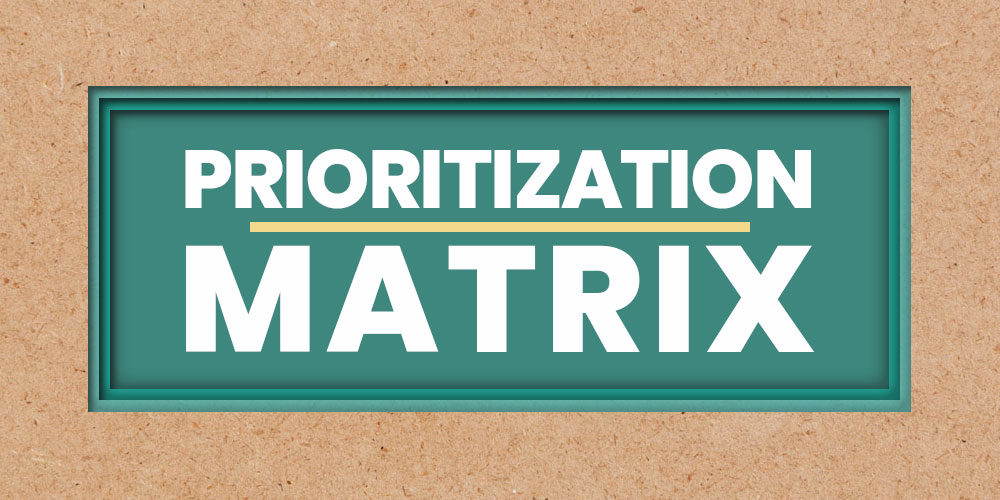 A while ago, I stumbled upon a little nugget of US history — a little tool that President Eisenhower used to great success in securing victory in WWII. With it, I’ve been able to control the chaos, keep me focused on what’s important, and keep my stress levels way down. What simple tool lead the US to victory in WWII and can help you get things done in everyday life? A prioritization matrix.
A while ago, I stumbled upon a little nugget of US history — a little tool that President Eisenhower used to great success in securing victory in WWII. With it, I’ve been able to control the chaos, keep me focused on what’s important, and keep my stress levels way down. What simple tool lead the US to victory in WWII and can help you get things done in everyday life? A prioritization matrix.
To-do lists can seem endless, and there are only so many hours in the day. It’s not uncommon to see people around us losing their minds trying to keep up with increasing demands of life and work; It’s easy to fall into the trap of thinking this chaos is normal, that our own lives should be in an equally manic state. But with a few tricks, we can wrangle all the demands of everyday life that leave us stressed out for good.
The prioritization matrix is a simple concept with dramatic results, helping us understand what needs to be done first, what things can wait for later and what things we shouldn’t do at all. Eisenhower and many people today use this 2×2 matrix to figure out what their priorities are with great success.
What Is A Prioritization Matrix?

It’s a simple framework that is used to group tasks into four main categories: Do now, do next, do last, and do never. These are often shown in a 2×2 grid, where one side is how important something is and the other is how urgent something is. It makes more sense when you see it drawn like this:
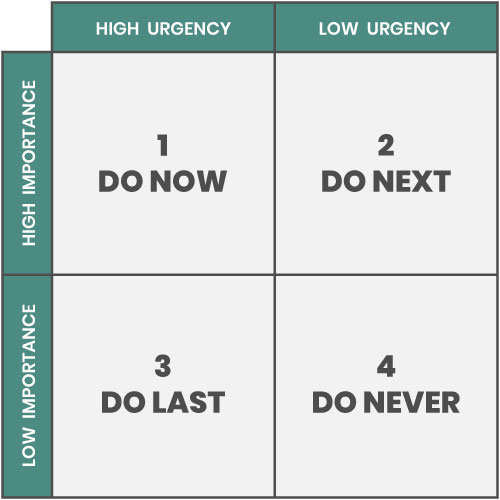
The most important items on your list are at the top and the least important items are on the bottom. You then also consider how urgent these things are, with high urgency on the left and low urgency on the right.
When we think about this, we want to do things that are very important and very urgent first. Conversely, we want tasks that are least important and low urgency to be at the very bottom of our list, or maybe even removed entirely. That’s where the genius of this simple little matrix comes into play, it helps us quickly decide where things need to fall in our prioritization.
Do First: High Importance, High Urgency

Things that are both important and urgent will fall in your top left quadrant, meaning they’re the things that you should do first before anything else. Remember that even within this box, you’ll need to rank the importance of each item.
Do Next: High Importance, Low Urgency
 Things that are important to you but have some flexibility in when they need to be done should be kept in your top right box. These things are important, but we have some breathing room. This is a critical distinction from the above because these things are not time dependent, which allows us to open up bandwidth to those things that are important but cannot wait.
Things that are important to you but have some flexibility in when they need to be done should be kept in your top right box. These things are important, but we have some breathing room. This is a critical distinction from the above because these things are not time dependent, which allows us to open up bandwidth to those things that are important but cannot wait.
This was a big shift in my thinking when I started using this. Separating the important things across an urgency scale meant I had space to focus on critical things.
Do Last: Low Importance, High Urgency

Next come things that aren’t that important, but have a timeline attached to them. Placing these in the bottom left quadrant means if there wasn’t a deadline where we would miss out on them, these things could potentially be pushed off indefinitely. Items that land in this box are good candidates for delegation.
Since they’re of low importance, we are making a judgment call that if time permits, we’ll do them, but if more important and urgent items are still being worked on, we’d sacrifice these. Realize that things can shift in importance as time goes on and how each item ranks relative to others on the list. After checking some big items off your list, an item here might become the new most important thing.
Do Never: Low Importance, Low Urgency

These things reside in our bottom right section of the matrix, meaning that they’re at the very bottom of our to-do list. These are things that you should consider taking off your list entirely. In my post about the simple office, I talk about how certain things should be eliminated first, outsourced second, and as a last resort, delegated to someone else.
These are things that you want off your list as quickly as possible through elimination. In some cases, I put these kinds of items in my “parking lot” list, which is a catch-all list of things that I want to keep track of for some later date. This parking lot is a document on my computer that isn’t consulted often but allows me to have a place for things without a place, setting them aside to deal with later.
Why Is A Prioritization Matrix Useful?

Whether you’re fighting the world’s largest global conflict like Eisenhower was or just trying to get your errands done with a little more sanity, understanding what’s important and what’s not, is key. Life can get very busy and if we don’t get a handle on our to-do list, we’re just going to run in circles. We all have a lot on our plates, and not managing it will leave us stressed, tired, and unproductive.
What’s worse is we could be spending what little time we have on things that don’t matter. That’s time we could be spending with our family and loved ones, doing something we love, or just relaxing. Life is too short to waste on things that don’t matter. While we all have responsibilities and things we don’t want to do, that doesn’t mean we have to spend all day doing them.
The matrix can be put to good use in a business context or for better project planning. Using this simple concept, I’ve been able to outperform almost everyone I’ve worked with and outpace my competition all while working less and cutting down stress in a big way.
Prioritization Matrix Example

Let’s say you have four tasks to complete, but you’re not sure exactly what order to do them in. Consider each task individually. Start by hovering you pen over the center of the grid; If the item is pretty important, move your pen to be over the top row, and if it isn’t super important, hover over the bottom row. Then ask yourself if it’s urgent, meaning does it have to be done now or later? If it needs to be done soon, move your pen to the left column and add it there. If it can be done later, move it to the right column and add it there.
The temptation here is thinking that everything needs to be done right now, but ask yourself: Is that really true?
Consider the following:
- Does this item align closely with my goals?
- What would happen if I did it later?
- Do any of these require the other tasks to happen first?
- If I could only do one of these, which would I choose?
- How does this compare to the other tasks in this quadrant?
Things that don’t closely align with your goals should not have high importance on your list.
If you feel that this is not the case, you either need to reconsider your goals or realize this item isn’t as important as you thought.
Some things can actually be done a little later without any real issue, so urgency is lower. Realize that if one task relies on something else to be done first, it’s inherently less urgent because you can’t do it without doing the other thing first.
You also can make judgements on the task relative to others by asking yourself the last two questions above. I like to do a reality check with thought experiments like, “If I could only do one of these, which would I choose?” Thinking like this will force you to see how things stack up relative to other things.
Prioritizing Your To-Do List

Having worked with a lot of entrepreneurs, clients, and even a few CEOs, there is a major tendency to think everything is “very important”. It’s a common hang-up and mindset of many people to have to overcome before they can master their to-do lists. I’ve had people state bluntly that “everything is a priority,” and while many people may not say it, they treat their task list as such.
So let’s get this out of the way: not everything is as important as everything else. It just isn’t.
The other element of this we must realize is that certain tasks take a certain amount of time, and we have a limited amount of time in the day. We can be more efficient in how we go about doing theses actions, but the fact remains that things take time to do and we only have so much time to get them done.
With that in mind, we realize that we can’t do everything right now. People will fight me on this, saying “but we’ve got to get ___ done!” This is very common and takes a shift in how we think to understand that we can do it all, just not right now. This forces us to do the most important things first, the next important thing after that, and keep moving from there. You can do everything on your list, it will just take time.
This is a really important shift in how we think because so many people get stressed out about all the things they’re not doing, the weight of undone items looming over them. With this new viewpoint, we alleviate a lot of this stress because it helps us see that we’re doing the most important things first. It gives us room to deal with what comes later when we have the bandwidth.
The most interesting part is studies have shown people who focus on a fewer priority first and move to lower tasks after that actually get way more done. The nature of multitasking has proven to be very inefficient and actually hurts our progress. In the end, focusing on a few things actually gets us there faster.
Different Use Cases For A Decision Matrix

In its simplicity, this decision matrix allows you to put a framework to use in many different needs and contexts. While the original matrix focused on importance and urgency, you can adapt it for different needs. In many cases, importance and urgency are the key performance indicators (KPIs), but not always. Sometimes costs, value created, amount of effort, feasibility, complexity and other variables need to be considered instead.
Evaluating A Tough Decision – Pugh Decision Matrix

In your personal life or at work, there are times when you need to make some tough decisions. A decision matrix adds a little more complexity to the matrix to help you consider different options across a few variables. For example, in buying a new car, you may have narrowed your list down to two options. You could then compare those two cars across a few different measures like: cost, average maintenance, MPG, and practicality.
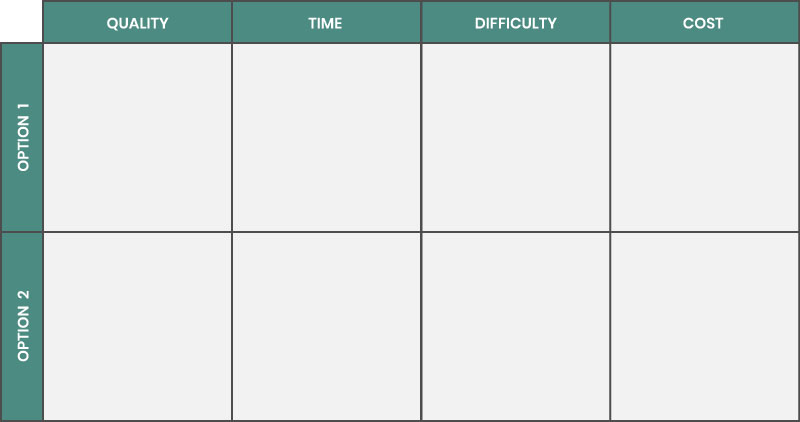
The options will be along the Y axis as your rows and the different criteria you’re evaluating them on will be your columns along the X axis. You can compare any number of options and evaluate them on multiple criteria. The easiest way to do this is by checking all the criteria each option meets, then total the checkmarks. The option with the most is the best option.
You can expand this to be more complex with numbers, such as a rating from 1 to 10, or you can add in weighted factors if certain criteria are more important than others. Just realize that this framework is flexible for your needs.
Taking A Risk – Risk Reversibility Matrix

This is an interesting matrix for making a decision where you’re not sure about the risk involved. It could be a decision where you’d have to spend a lot of money, or it could be that you’re deciding whether to move somewhere new or take a new job. This approach focuses on how much risk is involved and how easy it would be to reverse your decision to stop negative consequences.
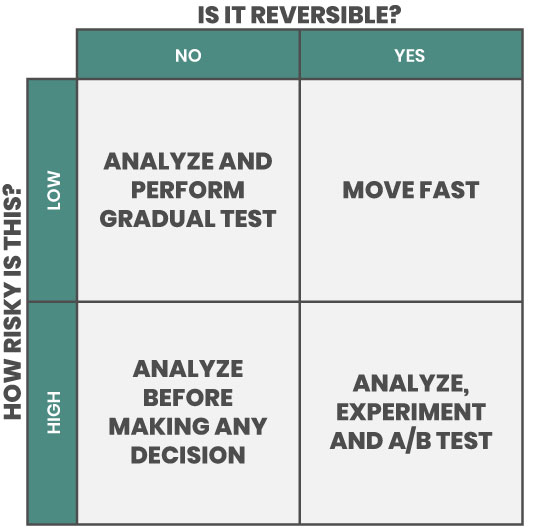
I used this approach when I was considering leaving my job to start a new business venture, realizing that there were several ways to go about it: start a new business on the side while still working full time, ask if I could go part time at work, or leave my job and go all in. Each had different risks associated with it and some were easier to undo than others.
Cost Benefit Analysis

Many times in life we have to consider things that may come at a cost, but could result in a positive outcome. An example might be getting a college education. A degree costs money upfront, but can lead to greater earning later on. You can hone in on various options you are considering by finding what will have the least cost with the most benefit, allowing you to get quick wins from low hanging fruit.
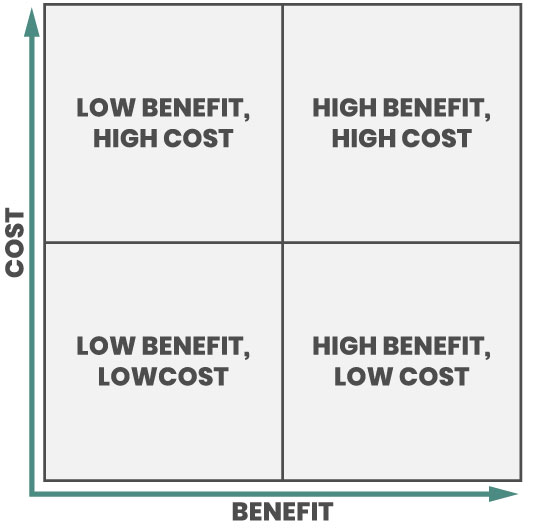
Product / Market Matrix – Ansoff Matrix
 When deciding how you might want to develop a new product, there are several ways to go about it: you can double down on your existing project, you can develop a new product for your current market, you can take your existing project to a new market or start a new product in a new market to diversify your income.
When deciding how you might want to develop a new product, there are several ways to go about it: you can double down on your existing project, you can develop a new product for your current market, you can take your existing project to a new market or start a new product in a new market to diversify your income.
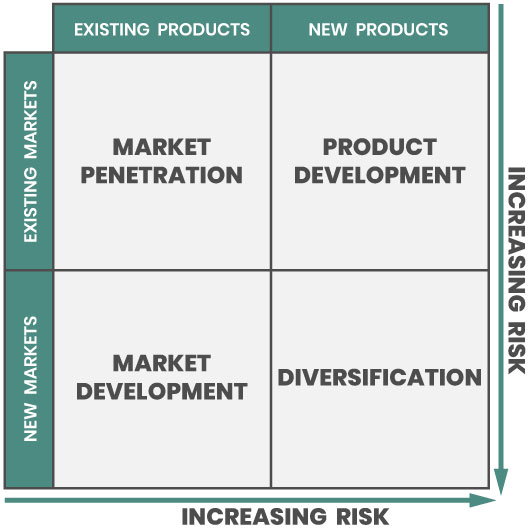
The Ansoff Matrix is simply a decision matrix to make high-level decisions in business about how you want to proceed.
Using The Prioritization Matrix + Matrix Template Download

If you want to get started, here is a free template to download for you to start prioritizing your life and tasks at work. Included in the download are five questions to ask yourself about these tasks to make sure you put them in the right spot.
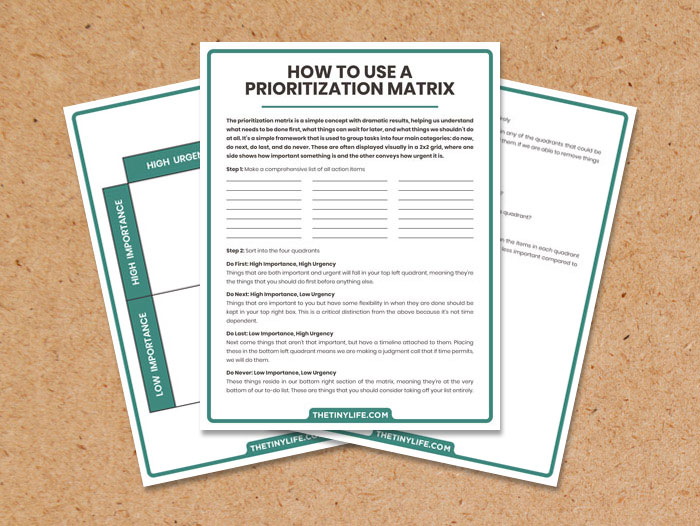
How To Prioritize Your List:
- Make a comprehensive list of all action items
- Consider the qualifier questions for each item
- Write down tasks in the appropriate quadrant
- Consider what items shouldn’t make the cut
- Once all are sorted, rank within each quadrant
I hope this has helped you get a better grasp of how you can take charge of your task list and prioritize your way to success!
Your Turn!
- What tricks have you learned when prioritizing things?
- What’s at the top of your to-do list?
THE FOUNDATIONS
Click Titles To Visit Each Post


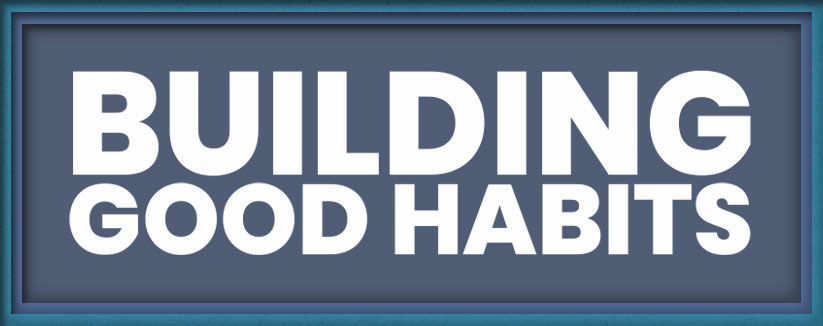

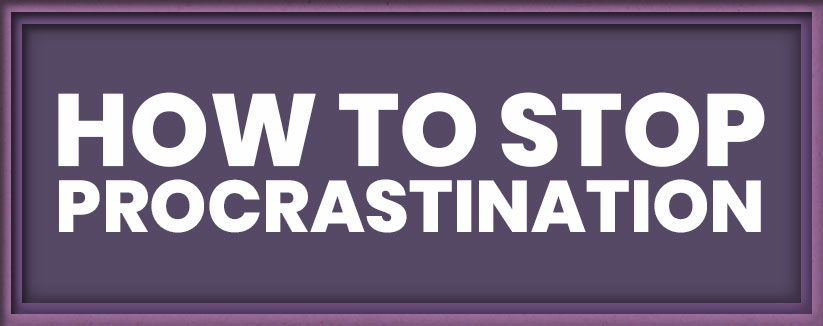
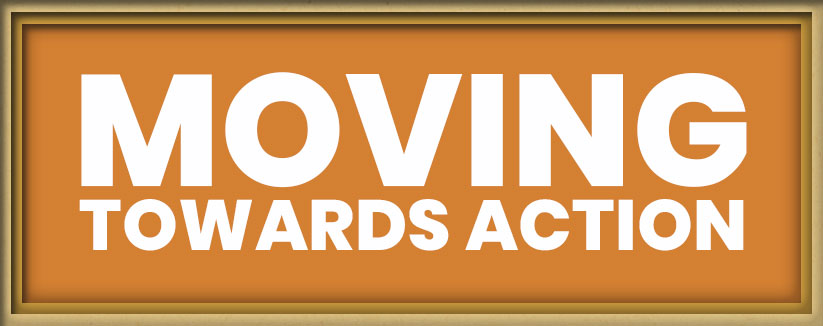
Very interesting way to organize one’s priorities. I find one of the rules of success is also DO what you hate first, get it out of the way. It hels so much.